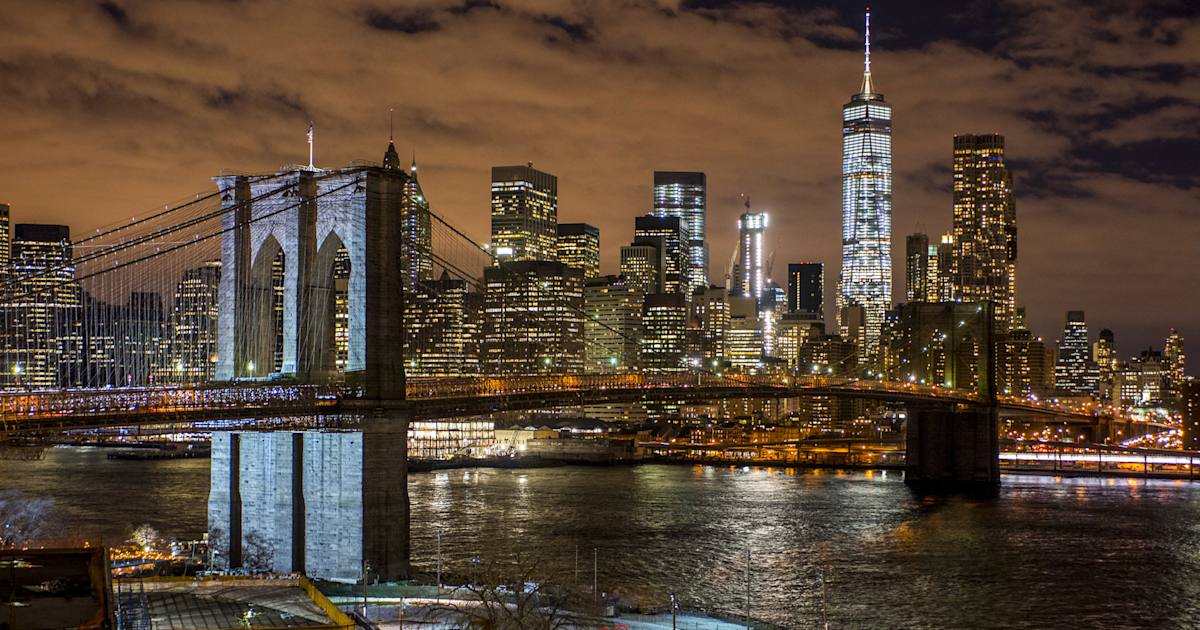
Tragedy on the East River: Mexican Naval Ship Collides with Brooklyn Bridge
On May 16, 2025, New York City’s iconic Brooklyn Bridge became the scene of a harrowing maritime disaster when the Mexican Navy’s tall ship Cuauhtémoc struck the underside of the bridge’s Manhattan-side arch. The collision, which occurred during the vessel’s departure from a goodwill visit, resulted in two fatalities, multiple injuries, and a dramatic rescue operation. While the 142-year-old bridge emerged structurally unscathed, the incident cast a spotlight on the risks of navigating historic waterways amid modern maritime challenges.
The Collision: A Timeline of Chaos
At approximately 10:15 a.m., the Cuauhtémoc—a three-masted barque used for naval training—began its journey down the East River after docking in Manhattan for a cultural exchange program. The ship, carrying 277 crew members and trainees, had just passed under the Manhattan Bridge when witnesses reported it veering off course near the Brooklyn Bridge’s central span.
Key Moments:
-
Power Loss: Preliminary investigations suggest the ship experienced sudden mechanical failure, causing it to lose propulsion and steering control.
-
Impact: The 295-foot vessel’s main and foremasts struck the bridge’s limestone arch, snapping all three masts. Debris rained onto the deck, killing two crew members instantly and injuring 19 others.
-
Harnessed Sailors: Several trainees, secured in safety harnesses for rigging drills, were left dangling 100 feet above the deck as the masts collapsed. Firefighters and Coast Guard teams used cranes and cherry pickers to conduct a two-hour aerial rescue.
-
Drifting Aftermath: Adrift and mastless, the Cuauhtémoc collided with a support pier near Fulton Ferry Landing before responders stabilized it with tugboats.
Rescue and Response
The New York City Fire Department (FDNY) and U.S. Coast Guard launched a multi-agency response:
-
Injured Crew: Medics triaged the wounded on-site, transporting 10 critically injured sailors to Bellevue Hospital. Others were treated for fractures and lacerations.
-
Bridge Safety: Engineers from the Department of Transportation conducted an emergency inspection, confirming the bridge’s granite and steel infrastructure suffered no damage. Traffic resumed within four hours.
-
Environmental Concerns: Crews contained a minor fuel leak from the Cuauhtémoc, preventing ecological harm to the East River.
Investigation: Unraveling the Cause
The National Transportation Safety Board (NTSB) and Mexican naval authorities are jointly investigating the incident. Early findings point to multiple factors:
-
Mechanical Failure: The ship’s engine room reportedly lost power minutes before the collision, disabling thrusters critical for tight maneuvers.
-
Tidal Currents: Strong outgoing tides in the East River, which can exceed 4 knots, may have exacerbated the loss of control.
-
Human Error: Questions remain about whether the crew misjudged the clearance height (135 feet at low tide) versus the masts’ height (147 feet).
The Cuauhtémoc’s black box, recovered from the wreckage, is expected to provide further insights.
The Cuauhtémoc: Pride of the Mexican Navy

Launched in 1982, the Cuauhtémoc is a symbol of Mexico’s maritime heritage. Named after the last Aztec emperor, the steel-hulled barque trains cadets in navigation and seamanship. Prior to the accident, the ship had completed a tour of East Coast ports, fostering international camaraderie. Its crippled state post-collision—a tangle of splintered masts and torn sails—left the naval community in shock.
The Brooklyn Bridge: An Engineering Marvel Tested
Completed in 1883, the Brooklyn Bridge stands as a testament to 19th-century ingenuity. Designed by John A. Roebling, its hybrid cable-stayed suspension system was revolutionary, combining steel cables with granite towers. Key specs include:
-
Main Span: 1,595.5 feet (486.3 meters).
-
Deck Height: 127 feet (38.7 meters) above mean water level.
-
Materials: 14,680 miles of steel cable, supported by limestone and Rosendale cement.
Despite its age, the bridge’s robust construction—originally built to handle horse-drawn carriages—has adapted to modern traffic, surviving hurricanes, terrorist plots, and now a ship collision.
Political and Diplomatic Fallout
Mexican President Claudia Sheinbaum addressed the nation hours after the incident, calling the deaths “an irreplaceable loss” and vowing full cooperation with U.S. investigators. The Mexican Navy announced a period of mourning, flagging ships at half-mast nationwide.
In New York, Mayor Eric Adams praised first responders but urged a review of maritime protocols: “This isn’t just about one ship. We need to ensure our waterways are safe for all.”
Historical Context: East River Navigation Risks
The accident highlights persistent challenges in New York’s busy waterways:
-
Bridges: The East River’s four bridges (Brooklyn, Manhattan, Williamsburg, Queensboro) have low clearance compared to modern ships.
-
Traffic: Over 300 vessels traverse the river daily, from ferries to freighters.
-
Regulations: Current rules allow ships up to 135 feet tall to pass under the Brooklyn Bridge at low tide—a standard set in 1883. Critics argue this is outdated given today’s taller vessels.
In 2009, a helicopter crash near the bridge spurred calls for updated airspace rules, but maritime guidelines remain largely unchanged.
Looking Ahead: Safety Reforms

The NTSB’s final report, due in 2026, is expected to recommend:
-
Height Sensors: Real-time clearance monitoring for ships.
-
Tug Escorts: Mandatory tugboat accompaniment for tall vessels in confined waterways.
-
Crew Training: Enhanced simulations for emergency scenarios.
Meanwhile, the Cuauhtémoc will undergo repairs in a New Jersey dry dock, funded jointly by Mexico and U.S. insurers.
Conclusion: Resilience Amid Tragedy
The Brooklyn Bridge collision serves as a stark reminder of the delicate balance between historic infrastructure and modern transit. While the bridge’s endurance symbolizes human achievement, the loss of life underscores the cost of complacency. As investigations continue, the incident may well become a catalyst for maritime safety reforms—ensuring that the lessons of May 16, 2025, protect future generations on both sea and shore.
Key Facts at a Glance
-
Date: May 16, 2025
-
Fatalities: 2 crew members
-
Injured: 19
-
Ship: ARM Cuauhtémoc (Mexican Navy)
-
Bridge Damage: None
-
Investigation: Led by NTSB and Mexican authorities
-
Historical Precedent: First major ship collision with the Brooklyn Bridge since 1883





